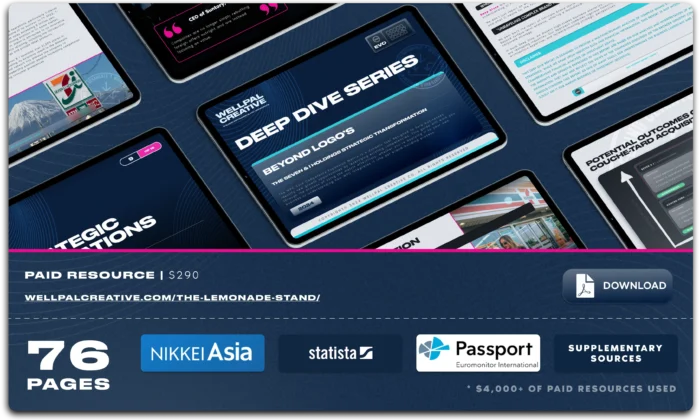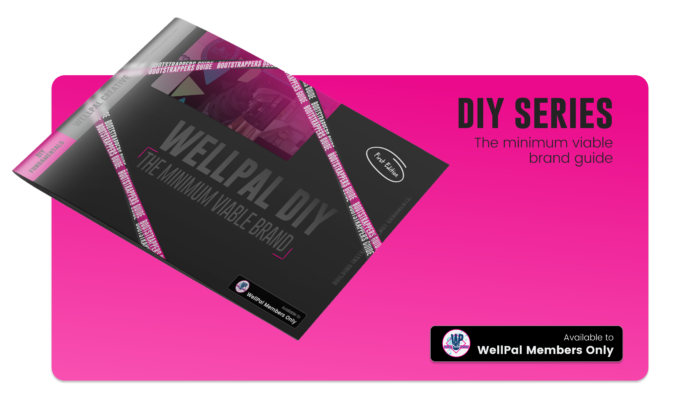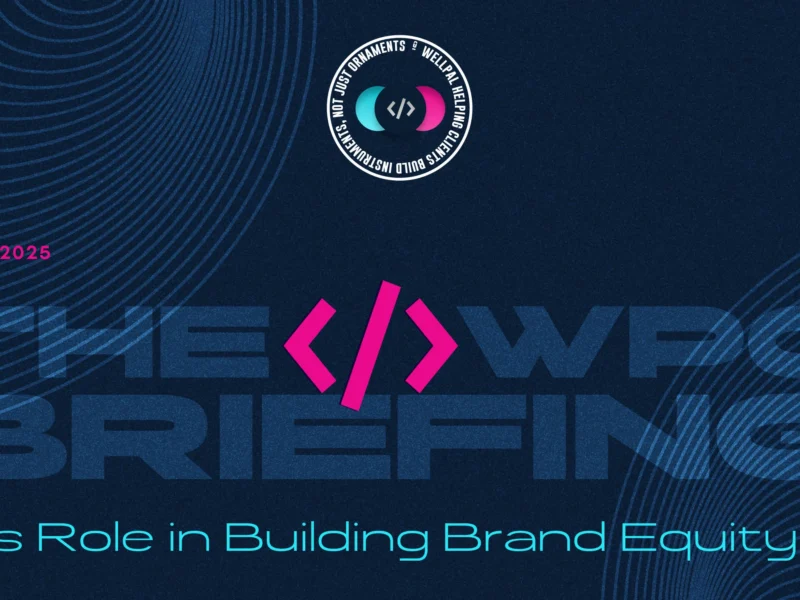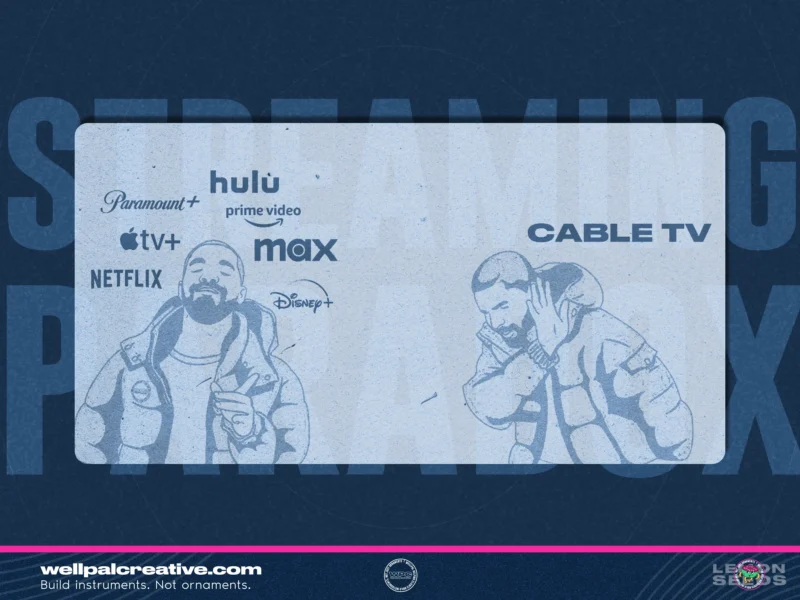COPYRIGHT © 2025 WELLPAL CREATIVE


“Build Instruments. Not Ornaments”
Featured
-
Couche-Tard Acquisition Strategy - Deep Dive Report
$290.00Original price was: $290.00.$200.00Current price is: $200.00. -
DIY Series - The MVB Kit
$25.00
Recent Lemon Seeds
Copyright © 2025|2026 WellPal Creative
AI’s Role in Building Brand Equity
Why AI Can Optimize—But Not Own—the Strategic Work of Equity Creation.
Purpose of The WPC Briefing
a layered perspective
In a world where markets and technology shift overnight and disruptions are the new normal, decision-makers need more than just information—they need clarity or signals.
The WPC Briefing aims to offer leaders a decisive edge. These monthly briefs are not about revisiting established theories or drowning readers in data (for more lengthy reports check our Lemon Seeds).
Instead, they deliver sharp, actionable insights that dissect emerging shifts in technology, cultural dynamics, and competitive landscapes—helping leadership teams anticipate change and respond with precision.
Designed for decision-makers who view branding as a strategic system rather than a surface-level exercise. By focusing on what matters most, these concise briefings serve as a trusted resource for sparking discussions, refining strategies, and navigating complexity with confidence.
Brief by design
It’s intentional. I understand that time is a luxury most leaders don’t have. The WPC briefing readers are already familiar with the theoretic frameworks. What they need is a cheat sheet into WPC’s unique outlook on these ideas, paired with advanced perspectives on emerging challenges like AI disruption, brand shifts, strategy, business models and much more.
table of contents
Jump Straight to the Essentials
Core Insight
Is it possible to quantify human behavior and psychology?
AI can now generate logos, slogans, and even “strategic plans” in seconds. But if you’re RELYING on it to build your brand’s identity, you might be trading short-term efficiency for long-term irrelevance.
The rise of generative AI has sparked a dangerous assumption: that branding—once a deeply human and psychology based craft—can now be automated.
And while AI can accelerate execution, it lacks the strategic intuition, cultural fluency, and competitive foresight needed to build brands that endure.
But hey, what do I know. Lets see.
This WPC Briefing cuts through the hype, revealing:
- Where AI adds real value (and where it’s just noise).
- The critical gaps in AI-generated strategy that leave brands vulnerable.
- How leaders can harness AI as a tool—not a crutch—while keeping strategy human at the core.
If your brand’s identity feels replaceable, it probably is. We can all do with some tough love.
Context
The AI Branding Paradox
As generative AI floods the market with instant logos (round 3 for designers in the game of elimination; yet they’re still relevant and will continue to be imho), automated copy, and data-driven branding suggestions, a critical question emerges:
Can AI play a meaningful role in building brand identity—or is it just a sophisticated mime?
Within the context of building brands, “Brand identity” is more than aesthetics; it’s a cohesive system of meaning, differentiation, and strategic intent that aligns with business models and competitive dynamics. We know this by now. So while AI accelerates execution, its role in strategic brand-building remains contested. Be critical in your thinking when it comes to generational shifts.
MACRO LEVEL
AI’S ROLE IN BRAND SYSTEMS
Ok let’s systematically go through this is a more bullet point format and keep in mind nuance applied. This is a briefing for signal.
Brand Identity
AI’s Capacity
- Rapid Prototyping – Generates logos, messaging, and visual concepts in seconds.
- Mines trends for “optimal” design (e.g., predicts high-conversion colors).
- Personalization at Scale – Dynamically adjusts branding elements for different audiences.
Human-Critical Functions
- Semantic Depth: AI can’t grasp why Patagonia’s “Don’t Buy This Jacket” campaign strengthened loyalty by rejecting consumption logic.
- Anti-Template Courage: AI defaults to averages (62% of AI-generated palettes use #0088FF blue). Humans invent ownable codes (e.g., Tiffany’s 1837 blue), now there is an argument for “is this even necessary?” I admit, we can argue this, but not for the purpose of this brief.
Brand Equity
AI’s Capacity
- Optimizes touchpoints (e.g., personalized ads).
- “Predicts” churn risks from sentiment shifts.
- Data-Driven Insights – AI analyzes consumer sentiment, competitor moves, and cultural trends at scale.
Human-Critical Functions
- Synergy Creation: AI sees layers in isolation; humans architect multipliers (e.g., Red Bull’s identity + media empire + F1 = cultural dominance).
- Strategic Sacrifice: AI can’t reject short-term gains for long-term equity (e.g., Rolex ignoring mass-market demand).
The Rising Expectation (and Danger)
Many leaders (mostly the ones thinking in quarters and squeezing bottom lines every chance they get in favor of short-term gains) now assume AI can replace human strategists, given its ability to produce plausible-sounding strategic plans.
But this overlooks a key distinction:
- AI optimizes (finds patterns in existing data).
- Strategy creates (defies patterns to build advantage).
MiCRO LEVEL
Where AI Falls Short in Brand Strategy
Ok same systematic go but on a more micro level and from the pov of AI’s shortcomings.
No True Strategic Reasoning
AI lacks game-theoretic intuition: It can’t anticipate competitor countermoves or strategic bluffs.
Example: AI might suggest "lower prices to gain share," but won’t predict a price war (or in some cases those who use it and don’t see a tariff war coming - wink wink).Human Advantage: Strategists weigh trade-offs (short-term loss for long-term positioning) and apply it to situational and contextual environments.
The "Generic Brand" Problem
AI converges toward averages, leading to homogenized branding.
Example: If every brand uses AI for "optimal" colors/messaging, differentiation collapses.
Human Advantage:
True brands defy conventions (e.g., Liquid Death’s irreverent positioning in a stale market).
Execution Blind Spots
AI can’t navigate organizational realities
Example:
- Will the sales team resist this new messaging?
- Do we have the operational capacity to deliver on this promise?
Human Advantage: Strategists align vision with feasibility.
The Data Paradox
AI Favors patterns, but equity often comes from breaking them.
Example: Nike’s Colin Kaepernick campaign defied sentiment data.
Human Advantage:
Use AI for diagnostics, not directives (e.g., AI flags risks, humans decide when to ignore them).
The Irrational Blind Spot
AI can’t really simulate irrational prestige drivers.
Example: Hermès intentionally underproduces Birkins to inflame demand. Or why there is a culture for purchasing certain re-sale sneakers at Ludacris prices while others won’t even go for 50% of retail.
Human Advantage:
Lock AI out of scarcity/ritual decisions (e.g., luxury/hype pricing = anti-algorithmic).
Quantifying Strategic Advantage
AI’s Best Use
Human’s Non-Delegable Role
Rapid asset generation
Semantic meaning
Why colors/words matter and to some and not to others
Sentiment monitoring
Cultural tension/resonance exploitation
e.g., Dove’s “Real Beauty”
Competitor move prediction
Game theory bluffs
e.g., Tesla’s “Full Self-Driving” hype
Data mining/synthesis
Adaptive Strategy
How to pivot when assumptions break
Risk Mitigation Checklist
- Audit AI-generated branding for template fatigue (e.g., fonts, colors, messaging)
- Stress-test AI strategies for synergy blindness (does this plan multiply value across layers?)
- Isolate equity-critical decisions (pricing, partnerships) from AI optimization
Devil's Advocate
But AI Will Keep Improving!
The Argument
" Future AI will simulate human intuition and cultural nuance. "
Strategy isn’t just prediction
e.g., Tesla’s bet on EVs when data favored gas cars.
AI lacks intentionality
Strong Brands Thrive on Irrationality
e.g., Supreme’s scarcity model is economically "inefficient".
1
" I’ll Just Prompt AI to Avoid Synergy Blindness! "
The Illusion of Connected Thinking
AI can mimic synergy by regurgitating case studies
e.g., “Red Bull = media empire”
But it cannot create novel synergies because:
- No Holistic Context: AI lacks lived experience of how cultural shifts (e.g., extreme sports’ rise) intersect with business model innovation.
- No Intentional Trade-offs: Synergy requires sacrificing short-term gains (e.g., Red Bull losing money on F1 for a decade to build credibility). AI defaults to local optima.
Test Case (try it out)
Prompt: "Generate a counterintuitive strategy for a water brand."
AI Output: “Use edgy humor, target Gen Z.” (Predictable, low-risk.)
Human Output: “Market water as a ‘punk’ alternative to wellness culture.” (AI wouldn’t suggest this—it’s too semantically dissonant.)
Killer Question:

2
" I’ll Prompt AI to Think Outside the Box! "
The Paradox of "Creative" AI
AI’s “out-of-the-box” ideas are remixes of training data.
True counterintuitive moves require:
- Defying Data: Liquid Death worked because it ignored category norms (wellness = purity). AI’s “out-of-the-box” is still inside the dataset’s box.
- Cultural Risk-Taking: AI avoids proposing ideas that would score poorly in testing (e.g., “Let’s sell water in cans that look like beer”).
Test Case (try it out)
Prompt: "Generate a counterintuitive strategy for a water brand."
AI Output: “Use edgy humor, target Gen Z.” (Predictable, low-risk.)
Human Output: “Market water as a ‘punk’ alternative to wellness culture.” (AI wouldn’t suggest this—it’s too semantically dissonant.)
Killer Question:

3
" I’ll Give AI Rules for Luxury—Then It Can Plan! "
Luxury is Anti-Algorithmic
AI can follow stated rules
e.g., “high price = luxury”)
But luxury equity hinges on:
- Strategic Irrationality: Hermès intentionally underproduces Birkin bags to inflame demand. AI would flag this as “inefficient.”
- Cultural Taboos: Luxury avoids overt personalization (AI’s strength)—it’s exclusive, not “relevant.”
Test Case (try it out)
Prompt: "Plan a luxury handbag launch using these rules."
AI Output: “Limited edition, premium pricing, celebrity endorsements.” (Generic.)
Misses the Nuance: No grasp of ritual (e.g., waitlists as status signals) or heritage subversion (e.g., Gucci’s maximalist rebellion against quiet luxury).
Killer Question:

The core issue
AI’s Ontological Limits
These objections assume AI can transcend its fundamental nature:
- AI is Reactive (trained on past data), while equity-building is proactive (creating new futures).
- AI is Computational (optimizes measurable inputs), while equity is psychological (e.g., Tiffany blue = love, not Pantone 1837).
conclusion
AI as a Tool, Not a Strategist
AI is revolutionizing how brands execute, and its ideation speed and scale is becoming invaluable, but brand identity’s core—meaning, differentiation, and strategic depth—remains a human/emotional/psychological endeavor.
The winning formula?
- AI for speed and scale. (Optimize, automate, and accelerate—but never own equity or identity.)
- Humans for judgment and soul. (Edit, imagine, and sacrifice—the acts that build enduring value.)
For Leaders: Audit where AI is augmenting vs. automating your branding. If strategy feels generic, you’ve outsourced too much.
Found this insightful?
Share it with your network!
Deepen Your Strategic Edge
Explore curated tools and assets to future-proof your brand’s equity in shifting markets.
Couche-Tard Acquisition Strategy – Deep Dive Report
Interested to see how WPC can help you?
find out below or contact me.
-
1 solution
WPC Ideation & Prototyping (WIP)™
WellPal Ideation & Prototyping (WIP)™ is designed for dreamers and doers alike. Whether you're a startup looking to disrupt the market, a new business aiming to refine your brand, or an established company exploring new horizons, i’m here to help bring your vision to life.
-
2 solution
WPC Brand Navigator™
At the heart of the WPC Solution Suite is the Brand Nav approach, a brand business model tailored for elevating brand equity beyond just the operational aspect. Unlike traditional models, our Blueprint Navigator intricately blends strategic business insights with emotional customer engagement, ensuring your brand not only resonates but also endures.
-
3 solution
WPC Brand Evolution Suite™
WellPal Brand Evolution Suite™ is designed for brands at a crossroads, contemplating a fresh direction. Whether you're a brand who needs an identity refresh, or an established company exploring new horizons, or simply looking for strategic clarity in the clutter, i’m here to help bring your vision to life.
-
4 solution
WPC Visuals
WellPal Brand Visuals is simply the design and graphic aspect of the solution suite. It's for brands craving visual distinction. Beyond aesthetics, we craft visuals that encapsulate your essence, making every interaction across multiple touch points memorable. Brand identity design, visual identity design, UI Design and development, GFX design
MORE LEMON SEEDS
THE WELLPAL long-form BUSINESS & BRANDING BLOG
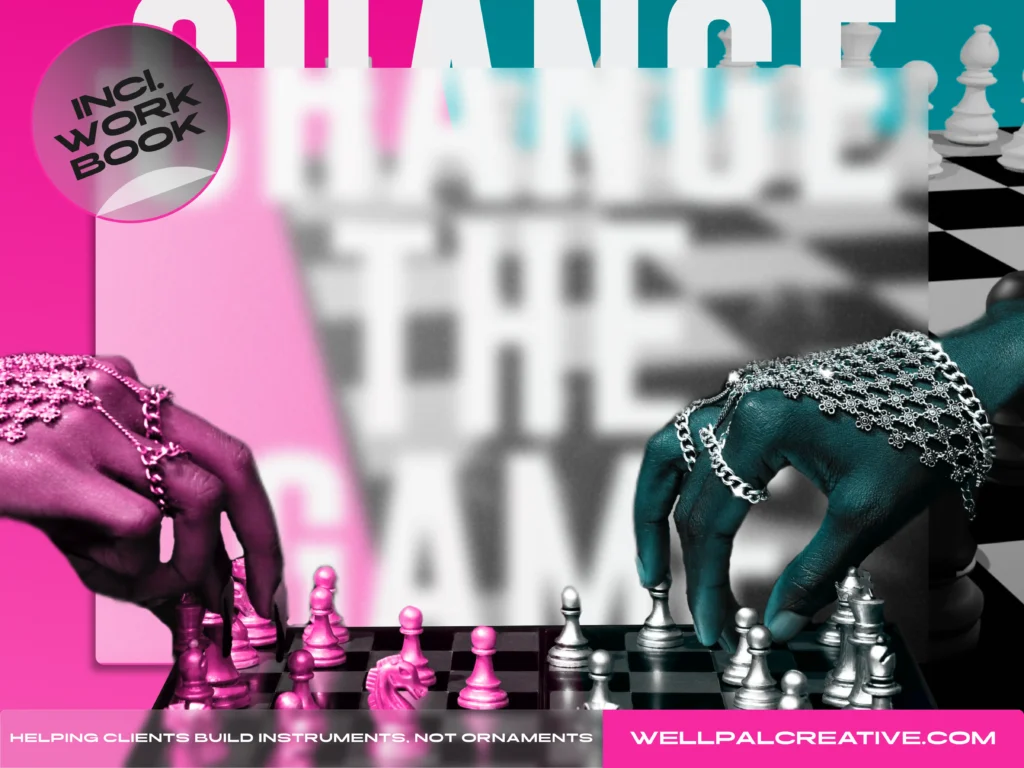
Change the Game

AI’s Role in Building Brand Equity

The Streaming Paradox: Convenience vs. Complexity – [LS18 ]

From Hype to Hallucination: How AI Is Transforming Branding, Strategy, and Business – [LS17]
share this brief
custom
"Signal vs Noise” Reports
Get in touch if you’re Looking to Transform market chaos into operational clarity through custom Brand Navigator™-filtered insights.


